For me, it is the opening of the bee that marks the change in the season. A sign that we are no longer in Spring, but in early Summer. When I think of seeing the first Bees of the season, I think of the long abandoned industrial site we go to, the sun reflecting off the broken concrete and tarmac, and the fist site of the Bees, bobbing in the sea breeze.
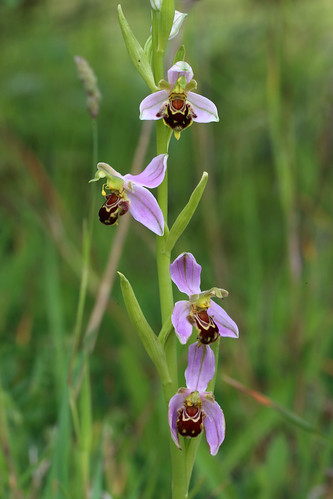 This year, the first Bee I saw was on June 5th, and the very first spike was huge, and had four flowering heads, showing brightly. An amazing sight from a dozen yards away, and one to entrance and warm the heart too.
This year, the first Bee I saw was on June 5th, and the very first spike was huge, and had four flowering heads, showing brightly. An amazing sight from a dozen yards away, and one to entrance and warm the heart too.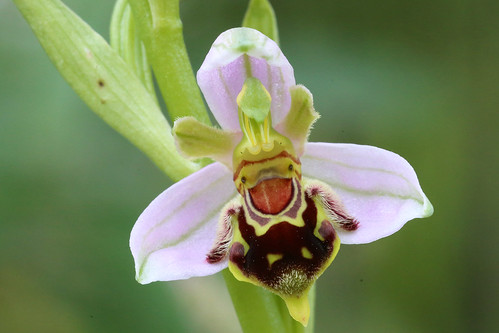 Elsewhere, there were many other spikes, none as spectacular as the first mind, but all over the site, more spikes than I had seen before, spreading over more of the site.
Elsewhere, there were many other spikes, none as spectacular as the first mind, but all over the site, more spikes than I had seen before, spreading over more of the site.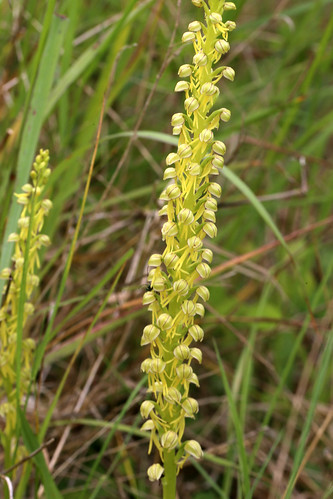 Among the broken concrete there were the first spikes of Southern Marsh showing, only two small spikes in flower, but glorious signs of things to come. And a few yards away, the huge clump of yellow Man, spikes already too numerous to count. I take shot after shot.
Among the broken concrete there were the first spikes of Southern Marsh showing, only two small spikes in flower, but glorious signs of things to come. And a few yards away, the huge clump of yellow Man, spikes already too numerous to count. I take shot after shot.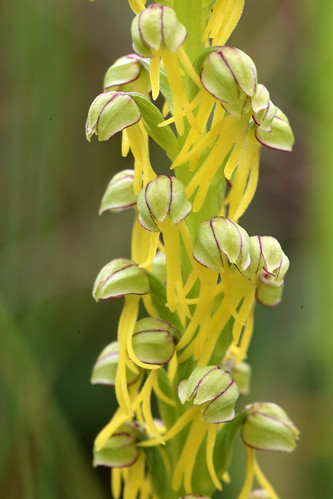 A week later sees me back at PGD to hunt for the smallest of the UK orchids. The Musk.
A week later sees me back at PGD to hunt for the smallest of the UK orchids. The Musk. 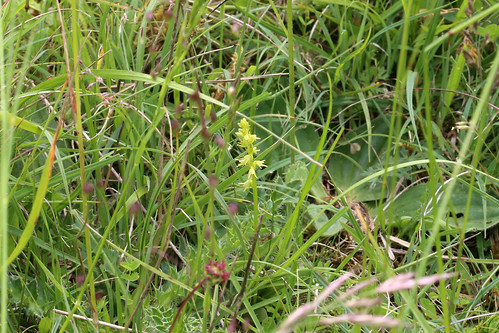 Despite being a huge site, three paddocks with a total length of about 800m and 100m wide, the Musk can grow in most of it, and yet grow in an area of a few square meteres, and are so small to be missed, unless you know where and when to look. The tiny spikes, and the first shoots are indeed timy, are the same shade of green most spikes have, a luminous lime green, the colour of new life. Musk pikes eventually have tiny green hands, the flowers on the spikes, and to see them, you need to get down to their level, checking first for other spikes of course.
Despite being a huge site, three paddocks with a total length of about 800m and 100m wide, the Musk can grow in most of it, and yet grow in an area of a few square meteres, and are so small to be missed, unless you know where and when to look. The tiny spikes, and the first shoots are indeed timy, are the same shade of green most spikes have, a luminous lime green, the colour of new life. Musk pikes eventually have tiny green hands, the flowers on the spikes, and to see them, you need to get down to their level, checking first for other spikes of course.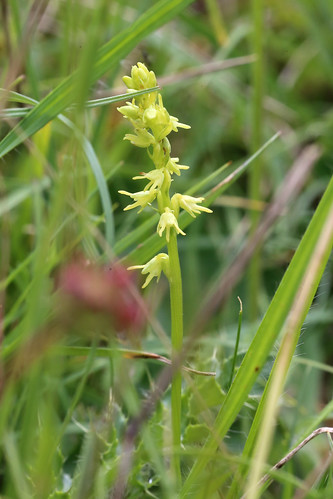 By now the Common Spotted at the top of the down are at their peak, including some pure white variants, I snap them, but fail to find the Greater Butterfly which I know should be there.
By now the Common Spotted at the top of the down are at their peak, including some pure white variants, I snap them, but fail to find the Greater Butterfly which I know should be there.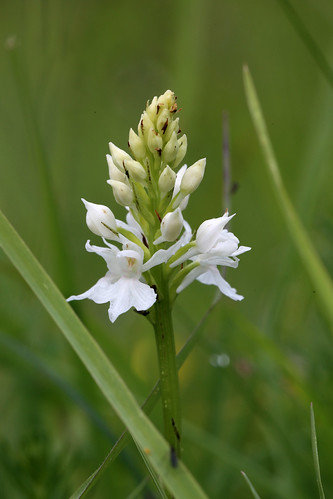 June 9th sees us in Sandwich, looking at the largest and most unusual of British Orchids, the Lizard. The Lizard is rare, grows in only a few places around the country; mostly golf links. These are huge orchids, smell of goat's wee and have the most over the top curly lips.
June 9th sees us in Sandwich, looking at the largest and most unusual of British Orchids, the Lizard. The Lizard is rare, grows in only a few places around the country; mostly golf links. These are huge orchids, smell of goat's wee and have the most over the top curly lips.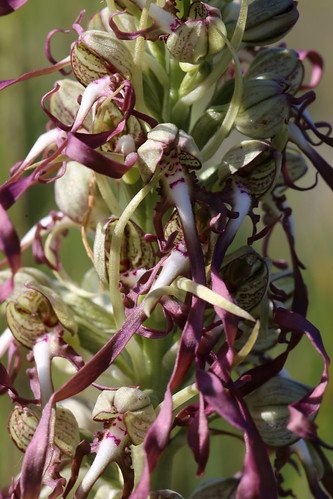 A further week later, I get a call from my friend Mark, did I want to see a new Kent orchid species? Not many more times I will be able to say that, but the Heath Spotted would be a new tick in the box for sure.
A further week later, I get a call from my friend Mark, did I want to see a new Kent orchid species? Not many more times I will be able to say that, but the Heath Spotted would be a new tick in the box for sure. The Heath Spotted likes acidic bogs, and there is just one such in Kent, and the Heath Spotted love it.
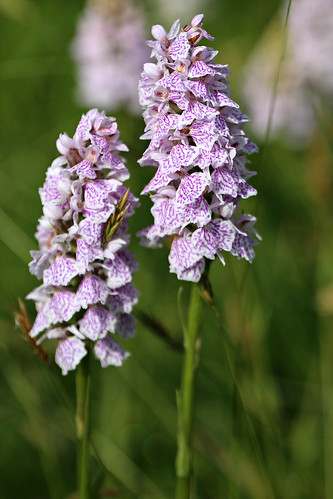 The Dactylorhiza family are hard to tell apart, they interbreed like crazy and are all variable. Even to folks that know, arguments can break out over what particular ones might be. The Common Spotted, Heath Spotted, Southern Marsh all interbreed, and can all look the same. And all three have pure white variants that apart from the shape of the lips and flowers look the same. And then you have to look close. Real close to see any difference.
The Dactylorhiza family are hard to tell apart, they interbreed like crazy and are all variable. Even to folks that know, arguments can break out over what particular ones might be. The Common Spotted, Heath Spotted, Southern Marsh all interbreed, and can all look the same. And all three have pure white variants that apart from the shape of the lips and flowers look the same. And then you have to look close. Real close to see any difference.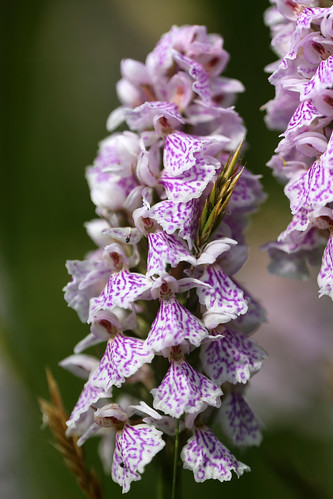 The bog is covered with Heath Spotted, including a pure white one too. And there is interbreeding with Southern Marsh too.
The bog is covered with Heath Spotted, including a pure white one too. And there is interbreeding with Southern Marsh too.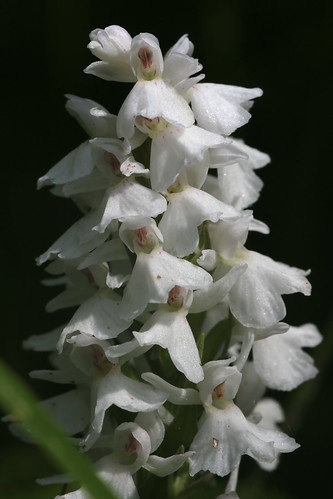 At the seaside, at Pegwell Bay, the Southern Marsh and Common Spotted had also been busy, interbreeding and producing the usual huge variation in size and shaped hybrids.
At the seaside, at Pegwell Bay, the Southern Marsh and Common Spotted had also been busy, interbreeding and producing the usual huge variation in size and shaped hybrids.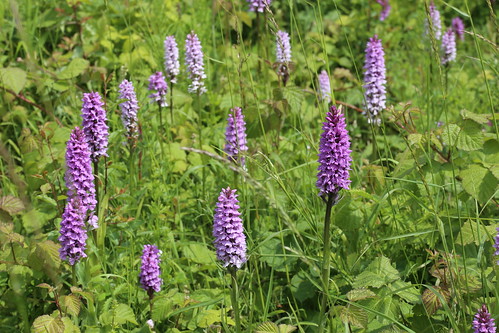 As well as the regulars of the two species. By this point here is hardly enough time to get round to every site to see the wonders that are emerging week on week. But even then, pegwell fells different, a popular site for walkers and families, and yet in an over crowded place just off a path, hundreds of spikes.
As well as the regulars of the two species. By this point here is hardly enough time to get round to every site to see the wonders that are emerging week on week. But even then, pegwell fells different, a popular site for walkers and families, and yet in an over crowded place just off a path, hundreds of spikes.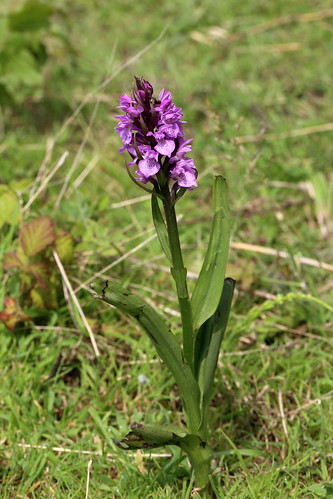 The Lizards were also at their peak this time, and certainly worth the £7 entry fee to drive into the estate to see them. At least they're safe there I guess.
The Lizards were also at their peak this time, and certainly worth the £7 entry fee to drive into the estate to see them. At least they're safe there I guess.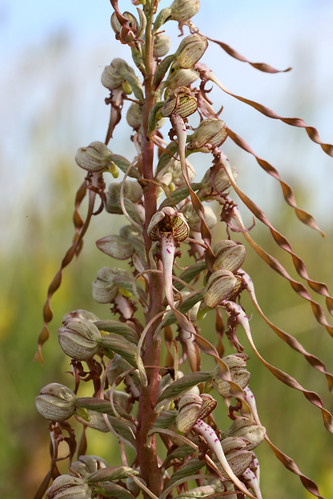 Also now out are the Pyramidals, so common along the coast between Sandwich and Dover, either down on the dunes or up on the cliff tops. I have yet to see a pure white one ehre, but did up in Suffolk late in the month when we went to look for Frog Orchids.
Also now out are the Pyramidals, so common along the coast between Sandwich and Dover, either down on the dunes or up on the cliff tops. I have yet to see a pure white one ehre, but did up in Suffolk late in the month when we went to look for Frog Orchids.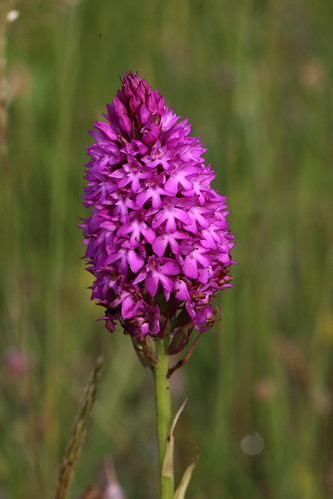 We are now at the end of June, the main season is fading out; the lady, Man, Monkey et al are now mostly drid spikes, a few woodland ones hang on, but now thoughts turn to the new month, and the Helleborines.
We are now at the end of June, the main season is fading out; the lady, Man, Monkey et al are now mostly drid spikes, a few woodland ones hang on, but now thoughts turn to the new month, and the Helleborines.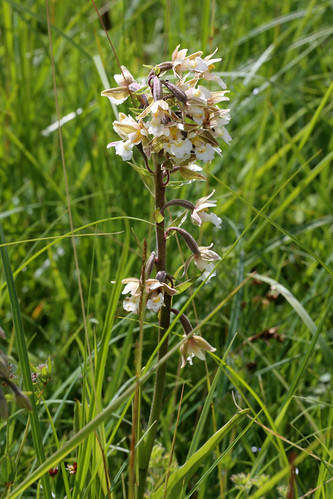

No comments:
Post a Comment